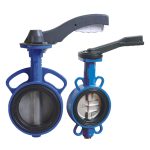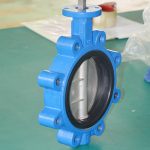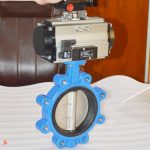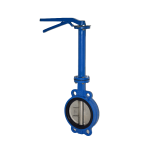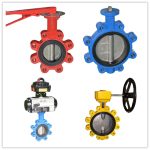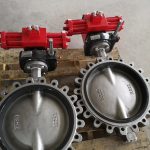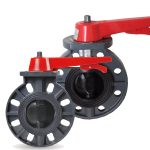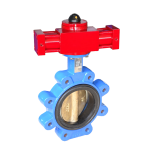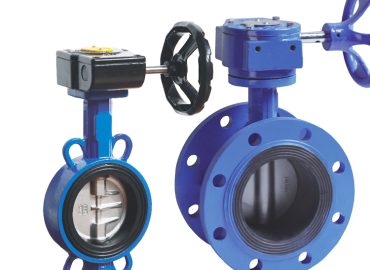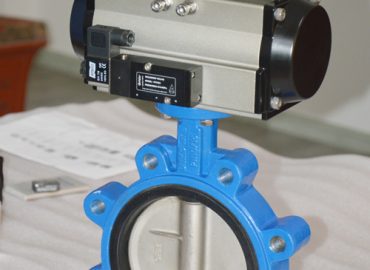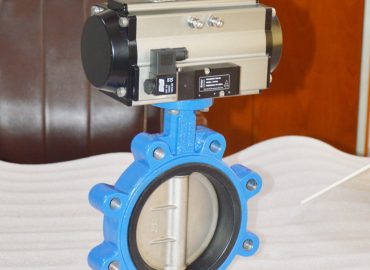Butterfly valves are an essential part of many fluid power systems, as they allow for precise control over the flow of liquids or gases. Lug or wafer butterfly valve are two popular types of these valves, each offering their own advantages in terms of installation ease, durability & reliability, and cost-benefit analysis. In this blog post, we will explore the benefits of using lug or wafer butterfly valves in various applications to help you make an informed decision.

Introduction Lug or wafer butterfly valve
Butterfly valves are used for a variety of applications due to their high flow-rate capabilities, low price, and ability to handle viscous liquids. Lug and wafer butterfly valves are the two major types of butterfly valves, with each type having its own set of advantages and disadvantages. Lug style butterfly valves, which use flanges or hubs in order to attach them to the pipe, offer more stability in heavier duty applications such as with higher operating temperatures or pressures. Wafer style, on the other hand, are easier to install due to their light weight construction and don’t require the additional cost and effort associated with using flanges or hubs.
In terms of durability and reliability, both lug and wafer type butterfly valves come in a variety of shapes, sizes, and materials that can be tailored to fit specific applications while still offering long-term service life and dependability.
Lastly, there’s also the cost-benefit analysis that must be considered when choosing between lug or wafer butterfly valve; examining the total costs involved in installing either type along with potential long-term savings if certain materials are chosen over others. Taking all these factors into consideration will help you make an informed decision when selecting the right type of valve for your application. China butterfly valve
a. Definition of butterfly valves
Lug butterfly valve are a type of quarter-turn valve commonly used for fluid control in piping systems. They are named after their characteristic asymmetrical disc which resembles the wings of a butterfly. The disc is connected to a rod and sealed with a liner, allowing it to rotate within the valve body to either permit or restrict flow.
Wafer Butterfly valve are used in a variety of industrial and commercial applications as they are able to regulate through any position of the disc and have relatively low cost and ease of installation compared to other types of valves. Additionally, they come in both lug and wafer designs, depending on the needs of the specific application.
b. Overview of lug or wafer butterfly valve
Lug and wafer butterfly valves are two common types of valve used in fluid control systems. The lug type is made up of two pieces consisting of a flange body and a fitted disc. This style of valve offers heavy duty construction and controlled shutoff, making it ideal for high pressure and temperature applications. The wafer-style butterfly valve, on the other hand, is lighter in weight and consists of only one piece with a flat disc attached to the stem. This design makes it easier to install than its lug counterpart but can be prone to leakage if not properly designed. Both lug and wafer style options are available in manual or automated versions depending on your needs.
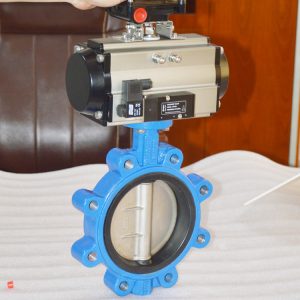
Installation Ease
a. Advantages of lug and wafer fittings
Lug and wafer fittings provide a number of advantages in fluid control systems. The lug style is heavy-duty, making it ideal for high pressure and temperature applications and allowing for controlled shutoff. Wafer fittings, meanwhile, are relatively light in weight and can be easily installed due to their one-piece construction. Additionally, both styles are available with automated valves for added convenience.
Another advantage of lug and wafer fittings is their relative low cost compared to other types of valves, making them a cost effective solution for many applications.
b. Comparing installation time for lug or wafer butterfly valve
Installation time is one of the main considerations when comparing lug and pneumatic butterfly valve. The lug type requires more assembly, as it consists of two pieces that need to be fitted together, making installation time longer. The wafer-style valve is much simpler to install, as it only consists of one piece and can be connected more easily. Additionally, automated versions of both types of valves are available which can further reduce installation time. Although the lug type initially takes longer to install, it provides greater reliability in terms of controlled shutoff and pressure regulation.
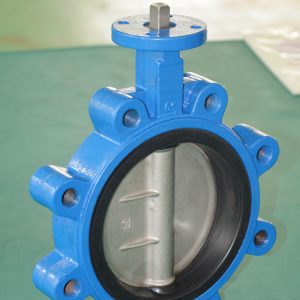
Durability & Reliability
When it comes to durability and reliability, both lug and wafer type butterfly valves come with their own set of advantages. Lug style butterfly valves have the benefit of being more secure in larger pipes or higher temperature applications because they are securely mounted directly to the pipe via flange or hub connections. This makes them less likely to be affected by vibrations or other external forces.
Wafer type butterfly valves, on the other hand, have a lighter construction which allows for easier installation; however, this can also reduce their overall strength if not designed correctly. Both types also come in a variety of shapes, sizes, and materials that can be tailored to fit specific applications while still offering long-term service life and dependability.
Choosing the right material for a given application will help ensure the valve offers reliable performance regardless of the environmental conditions it is exposed to during operation. Additionally, regular maintenance should be performed in order to catch any potential issues before they become major problems. All these factors should be taken into consideration when selecting the optimal valve for your application.
a. Variety of shapes, sizes, and materials available with both options
Lug and wafer fittings come in a variety of shapes, sizes, and materials to meet the requirements of various applications. The lug style is offered in a larger range in terms of size, while the wafer type usually comes in smaller sizes. Additionally, they are typically available in stainless steel or brass, with sealed or unsealed versions depending on needs. Wafer-style butterfly valves can also be found in plastic or rubber materials for corrosion resistance and weight reduction. Both types of valve offer great versatility when it comes to size and material selection.
b. Discussing the factors that affect durability and reliability in each type
Durability and reliability are important factors to consider when selecting butterfly valves. Lug-style valves generally offer greater durability due to their two-piece construction, which allows them to handle high levels of pressure and strain.
Wafer butterfly valves tend to be less reliable in this regard, as they are typically made from one piece and can be prone to wear or rushing if not checked regularly. Depending on the application, both types offer different advantages when it comes to durability and reliability.

Cost-Benefit Analysis
Cost-benefit analysis must be taken into consideration when deciding between lug and wafer butterfly valves. It is important to look at both the upfront cost of installing the valve, as well as any long-term savings that can be had if certain materials are chosen over others. For example, choosing a higher quality material for the construction of the valve may require a larger initial investment, but could save money in the long run because of its improved durability and longer service life. Additionally, if flanges or hubs are involved with lug style butterfly valves, these components should also factor into overall cost considerations.
Lastly, it’s important to consider what other costs might be associated with installing either type of valve such as corrosion protection systems or other protective measures that may need to be employed. Butterfly valve price
Taking all these factors into account will help ensure you make an informed decision when selecting the optimal valve for your application.
Conclusion
In conclusion, when deciding between lug and wafer type butterfly valves, careful consideration must be given to the cost-benefit analysis associated with each option. Lug style butterfly valves may require more upfront costs because of their larger components, but they provide increased safety and durability that can save money in the long run. Wafer type butterfly valves are lighter and require less expensive installation fees but can lack strength if not properly designed. Additionally, it is important to factor in any additional costs associated with preparing a valve for its application such as corrosion protection or other protective measures. Ultimately, taking all factors into account will help ensure you select the optimal valve for your application.


